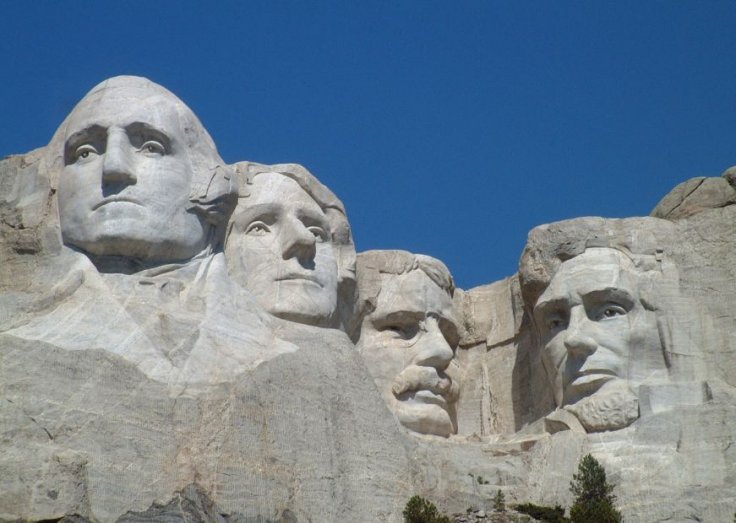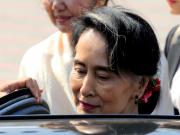Given the greatness of the youngest and 26th US President Theodore Roosevelt, the American Museum of Natural History (AMNH) must have contained all data pertaining to Roosevelt's inclination to collect specimens from African jungles towards the end of 19th century.
Interestingly, the Museum exhibits most of the artifacts, that speak of "racial hierarchy/ discrimination", and has very little for the visitors in terms of literature that speaks of the ideologies Roosevelt mulled on.
What's With The 'Removal of The Statue'?
Situated at Theodore Roosevelt Park in New York, the AMNH has been given approval by the NY city for the removal of the bronze equestrian statue of Roosevelt on its West entrance. The controversial statue has been the 'talk of the town' for the depiction of an indigenous man and an African American as guides, behind Roosevelt who is on a horse. James Earle Fraser – the sculptor who carved the bronze structure of Roosevelt in 1939, was one among many sculptors who were creating the statues of American Indians.

Eugenics And Allegorical Meaning
Even before Fraser carved the sculpture, we as readers must get back to the history, the excerpts of which tell us that Roosevelt was a big-time hunter. The most cherished headlines from first decade of 1900 were about President Roosevelt's "safari" into the African continent. After having completed his first term as President, he arrived into the wilds of East Africa, to fetch "specimens for the Smithsonian's new Natural History Museum" that today stands as National Museum of Natural History, in NY.
He was passionate about collecting such specimens and enjoyed studying them, while he also helped the museum gather the most vital specimens from African wilds. One of the two "guides" in the bronze statue is supposed to be an African primitive, while the other is said to be an American Indian.
The portrayal of two men in the statue has largely been criticized based on its depiction. Well, Henry Fairfield Osborn, President of AMNH (1908-1933) was a staunch believer of eugenics (the study of how to arrange reproduction within a human population to increase the occurrence of heritable characteristics regarded as desirable). Eugenics is the study of belief in possibilities that can improve quality of human species.

Osborn was fond of the specimens Roosevelt collected in the African wilds, and following positive eugenics to encourage reproduction to help the human race evolve, he discredited the "idea of selective breeding of humans, to eliminate certain traits or races – and advance others."
Prominent statements 'for' the depiction of two men
AMNH was established in 1869, and Roosevelt's father was one among the founding members of the museum. Osborn, who was very much related to Roosevelt's ideologies over positive eugenics, spent almost 15 years of his life to get the bronze statue of Theodore Rooselvelt in New York. It was very clear to Osborn that the two men with Roosevelt in the statue carry allegorical meanings, and so the statue stands today for the viewers to perceive its meaning, either positively or negatively – widely the perceptions have been negative.
Philip Deloria (of Dakota), Professor of History atHarvard University says, "You can see how these two figures have allegorical meanings relative to Roosevelt. They speak to Roosevelt as an American, as a person who happily goes as a dominating white figure to Africa, as a person who goes and takes advantage of the possibilities that [arise] by Indian land being dispossessed."
Referring to the criticism that Roosevelt's statue has received to date, Harriet F Senie, the Director of M.A. Art History, Art Museum Studies in the City College of New York, asserted, "In some criticisms, the standing figures were taken to be lesser than Roosevelt. That was never the intention. They are allegorical figures representing Africa and America, emphasized by the animals on the parapet reliefs."

Roosevelt And 2 Men: Heroic groups, Symbol of Fearless Leadership!
John Russell Pope (1874–1937), an American architect who designed many memorials and was inspired by the Roosevelt Memorial was mentioned by the Memorial Commission of 1928 and his dwscription read, "In the center of the terrace...will arise a polished granite pedestal bearing an equestrian statue of Roosevelt with two accompanying figures on foot, one representing the American Indian and the other the primitive African. This heroic group...will symbolize the fearless leadership, the explorer, benefactor and educator...."
The AMNH during Osborn's tenure as President had conducted conferences on eugenics – in 1921 and another in 1932. Eugenics in itself is a vast subject of study when it comes to humans, though there is positive and negative eugenics. A few scientists present in these conferences were said to have subscribed to erroneous theories of eugenics – that went on to be the sole reason for the displays in the museum, one being the statue outside.
Eugenics
What we derive in terms of understanding is that Roosevelt was a hunter and he often visited the African jungles. As mentioned by History Prof Philip Deloria of Harvard, "They (two men in the statue) speak to Roosevelt as an American, as a person who happily goes as a dominating white figure to Africa, as a person who goes and takes advantage of the possibilities that [arise] by Indian land being dispossessed."
According to the sculptor Fraser, The two men could also be a sign of "friendliness" that Roosevelt proposed as he went to the African land on hunting expedition, and the Africans let him in; OR as the world sees it that Roosevelt considered the two men to be his gun carriers, and pursued his idea of "white supremacy" while intending the whites to uplift and train the blacks or African Americans.









